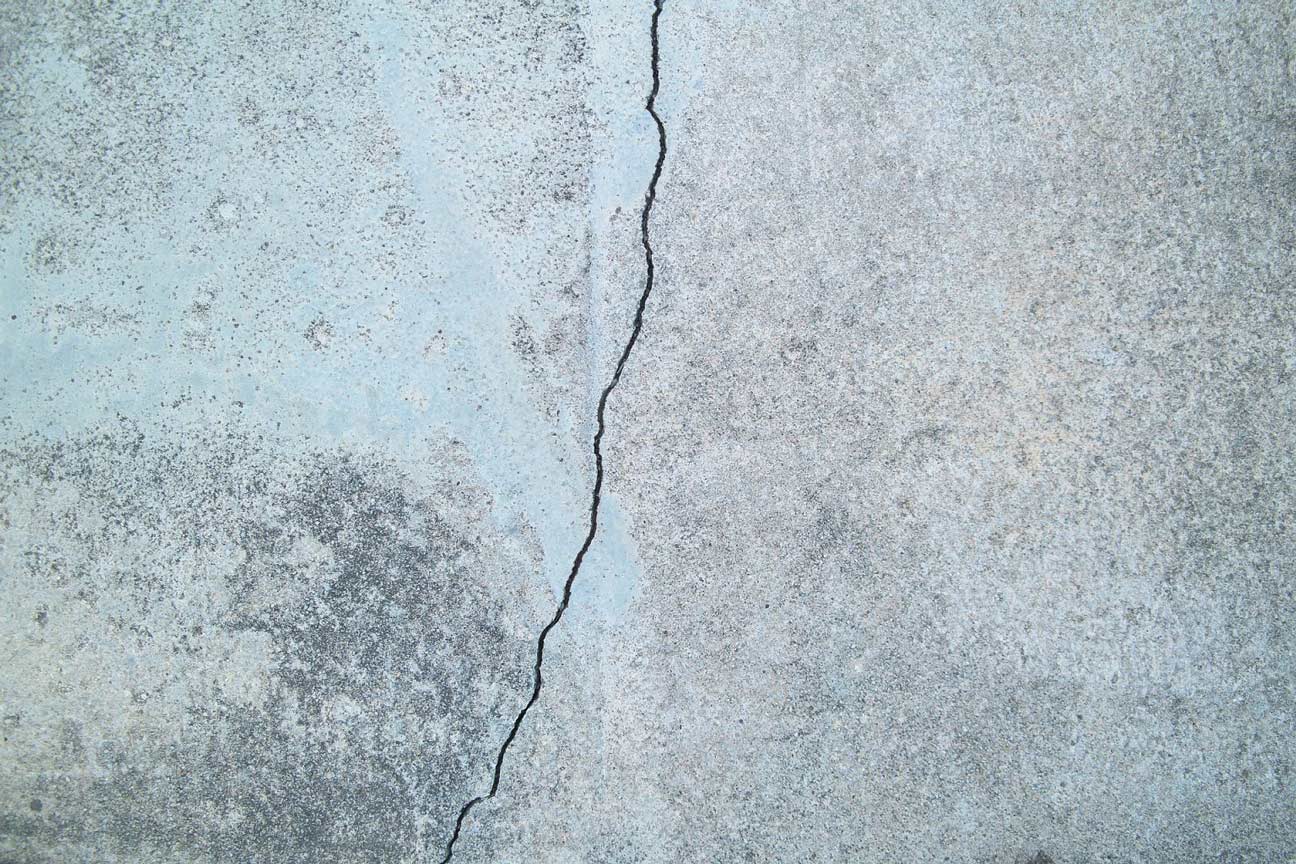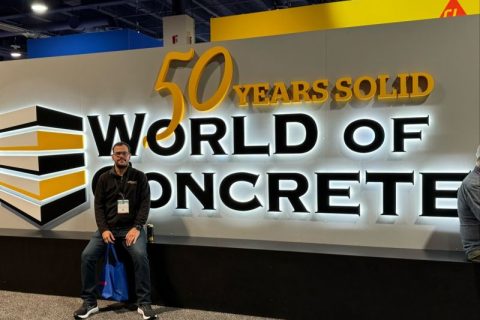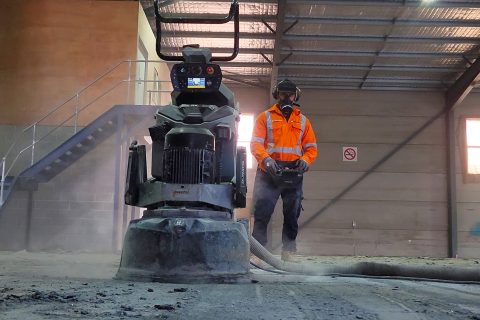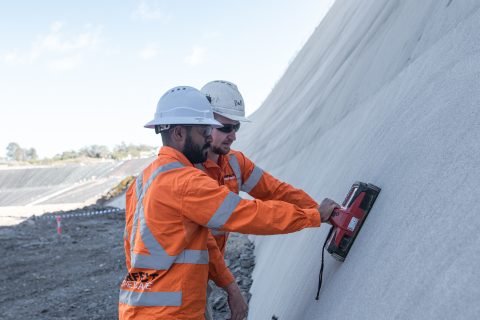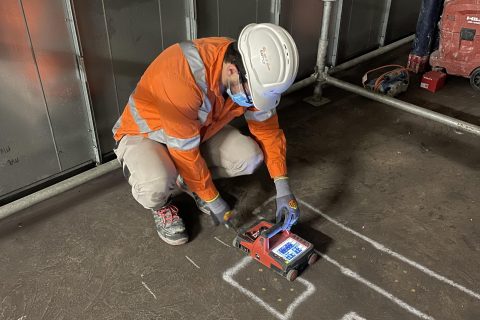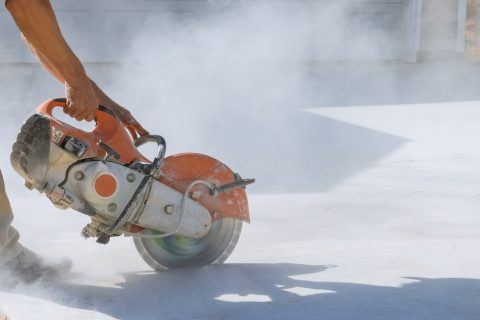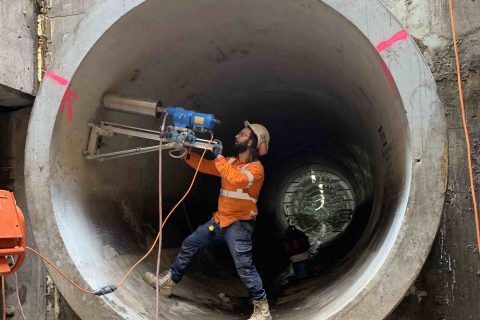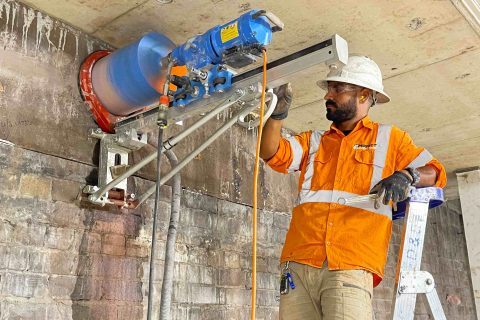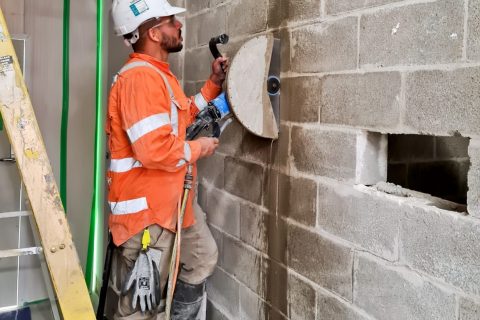by Daniel Green
It’s late Friday, you’ve had a big week/month/year and you’re wrapping up the last details of a job you’ve spent most of the year on. Blokes and their utes are out on the street, loading up and leaving. As you close the gate for the last time you notice a long skinny shadow snaking its way across the middle of the brand new driveway, poured only this morning. You look up but there are no trees within sight and upon closer inspection, you realise it’s actually a metre-long hairline fracture.
This scenario is not uncommon. But with the sheer time it takes to design, prep, pour and then breakout cracked concrete so you can do it all over again – let’s take a closer look at the reasons why.
The Broad Strokes
Death, taxes, and concrete cracks. Every concrete structure known to man has and will crack – either during curing, immediately afterward or many years on. As we’re all aware, it’s brittle & doesn’t bode well to a substrate that’s in constant flux [the earth], and secondly, the thermal expansion and contraction brought about during the curing process mean cracks in your concrete are just a part of life.
A Little Recognition
Recognising the type of crack can help you determine the cause.
Shrinkage Cracks. These are generally caused by a concentration of stress at the corners of the pour.
Settlement Cracks. These occur when the subgrade or footing moves or ‘heaves’ due to subpar preparation.
Expansion Cracks. These usually occur in narrower sections where the design ‘feathers’ out into a slender and therefore weaker shape.
Plastic Shrinkage Cracks. This is where the water content in the mix evaporates too swiftly during curing.
The Data
While most types of cracking do not affect structural durability or stability, all cracks are unsightly, and in extreme cases, these fractures can reduce the use and serviceability of the slab. Extensive research has determined that:
- 37% of cracks were due to construction or supervision problems.
- 26% were due to inadequate design.
- 22% were because of poor ambient conditions during the pour.
- 16% can be traced back to substandard materials.
Additionally, the causes of cracks are many:
- Shrinkage
- Rate of cure
- Amount of cure
- Tensile strength
- Elasticity
- Creep
- Restraints, or lack of
- Tensile strain
But for the purposes of this article, we’ve split the causes into two distinct categories:
- Cracks occur during curing.
- Cracks that occur after curing.
The Fine Strokes – Cracks Occurring During Curing
Too Hot/Dry.
When external conditions aren’t quite right during curing [either due to subgrade being too dry, temperatures that are too high, and/or ambient air that’s too thirsty], water can evaporate from the surface of the slab faster than it can be replaced by bleeding up from underneath. This difference in moisture causes the surface to cure faster than the rest of the pour – the ensuing variance results in cracking. Additionally, this can be compounded by the difference in the rate of thermal expansion between the surface and the remainder of the slab. Controlling the temperature by pouring earlier in the day as well as using windbreaks are two of the many measures you can take to prevent your slab from fracturing in this way.
Settling.
Cracks that occur on the vertical plane can be caused by the settlement of concrete around reo. This happens when the surface of the slab has cured or partially cured but the remainder of the slab is still settling underneath. Determining that this is the type of cracking that is affecting your pour is relatively straightforward because the cracks will follow the reo underneath. Alternatively, this can happen when coarse aggregate near the surface forms a skeleton causing cement paste to settle and separate. In both scenarios, using a vibrator will make a huge difference.
Formwork.
Any movement of formwork, no matter how small, is likely to cause cracks. Formwork that is poorly secured or is in a high traffic area, incorrect materials that have too much give, and amateurish vibrator use are the leading causes here.
Poor Preparation.
Wide cracks, sometimes extending through the slab, occur when the sub-grade material subsides before the concrete has developed strength, ie. fully cured. The primary reasons for this are man-made in the form of poor or inadequate preparation – muddy, poorly compacted, or the wrong material. Secondarily, because of natural phenomena that have the same effect.
Poor Design.
A slab is a slab, right? Not really. A poor design can take an otherwise hardy material and make it unserviceable. Things like intricate shapes, depth too shallow, feathered sections [especially the edges], reo too close to the surface [perhaps due to a depth too shallow], a lack of contraction joints, and so on. When these or other factors are involved, you’re really asking too much of your concrete and it’s probably destined to fail.
The Fine Strokes – Cracks Occurring After Curing
Wear and Tear. Concrete is extremely durable but it too has a shelf life. Over time it will develop cracks, especially if it’s had a hard life.
Excess Weight/Stress. Concrete structures are designed with weight and tensile limitations in mind. There is a safety margin but exceeding the design limits will result in failure.
Fluctuations in the Sub-Grade. Major changes in the landscape under your slab will cause it to crack. They may be natural – earthquakes, lowering or raising of the water table or they could be man-made – excavation for other works and so on.
Concrete Cancer. Whilst not strictly just a crack, concrete cancer will cause your slab to deflect parts of itself. You can read more about concrete cancer here: [link]
Broom It Down
With good preparation, materials, and workmanship, 95% of concrete cracks can be avoided.
- Ensure the sub-grade is well compacted and prepared.
- Make sure the formwork is solid and of the appropriate material.
- Wet the form and subgrade before the pour.
- Don’t mess with the mix.
- Compact low slump mixes comprehensively.
- Use expansion joints where necessary.
- Allow the pour to fully cure.
For any concrete-related questions, please call Perfect Concrete Care.

